Reliable particle identification (PID) is essential for any high energy physics experiment. The Time-Of-Propagation (TOP) counter is a ring-imaging Cherenkov detector designed to identify charged particles in the barrel region of the Belle II detector. When charged particles cross a TOP quartz bar, they emit Cherenkov photons, which are detected by a pixelated photodetector at one end of the...
Precision measurements in beta decay play an essential role in probing physics beyond the Standard Model. The recoil energy spectrum, in particular, offers exceptional sensitivity to new physics, but it presents significant challenges due to the very low energy of the recoiling daughter nucleus. As a result, recoil measurements remain an underexplored domain for most radioactive nuclei. The...
Study of few-body scattering and reaction processes is a highly contemporary topic in nuclear physics. In my contribution, I will present power-counting renormalizable potentials derived within so-called pionless effective field theory (/πEFT) up to next-to-leading order. This theory represents the simplest nuclear EFT which aims to address nuclear processes at very low energies. The pion...
The light-cone definition of Parton Distribution Functions (PDFs) does not allow for a direct ab initio determination employing methods of Lattice QCD simulations that naturally take place in Euclidean spacetime. In this presentation we focus on pseudo-PDFs where the starting point is the equal time hadronic matrix element with the quark and anti-quark fields separated by a finite distance. We...
Charged-hadron production in relativistic heavy-ion collisions of asymmetric systems is investigated within a nonequilibrium-statistical framework. Calculated centrality-dependent pseudorapidity distributions for p-Pb collisions at sqrt(s_NN) = 5.02 and 8.16 TeV are compared with data from the Large Hadron Collider (LHC). Our approach combines a three-sources relativistic diffusion model with...

